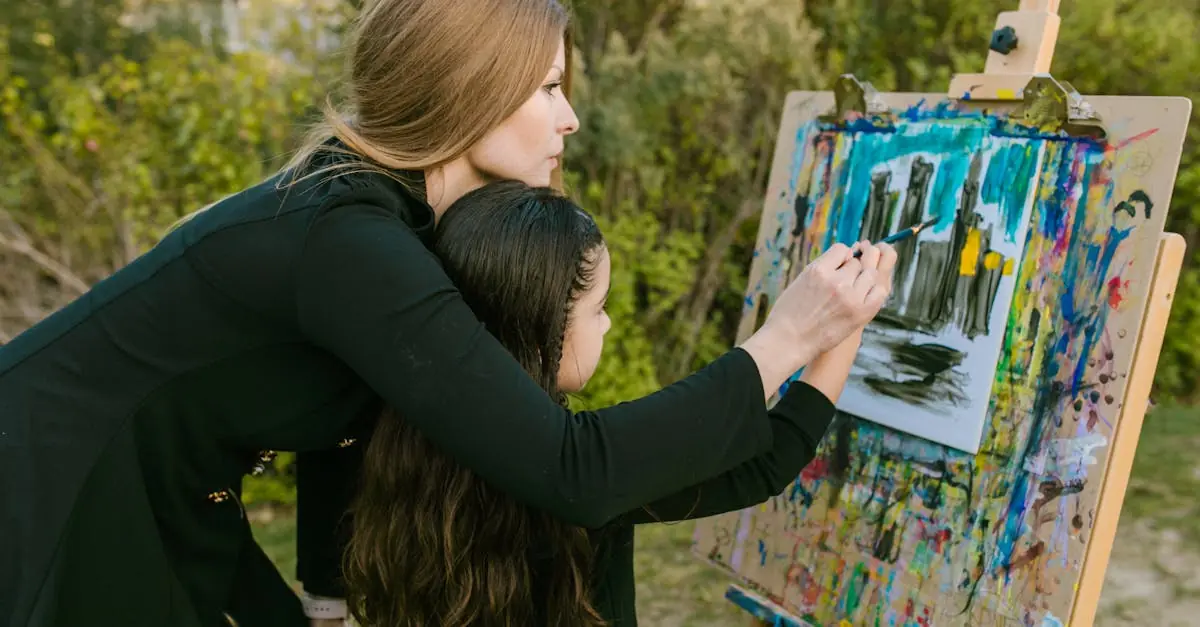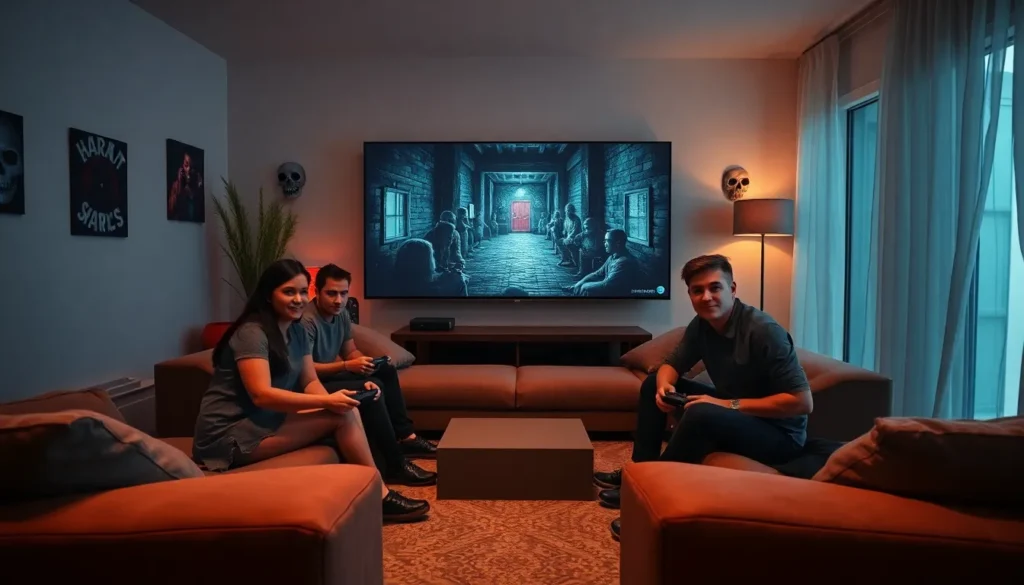In a world overflowing with creativity, finding a consistent art style can feel like searching for a needle in a haystack—blindfolded. An art style guide isn’t just a fancy document; it’s the GPS for your creative journey. It helps artists navigate through the chaotic landscape of colors, techniques, and themes, ensuring they don’t end up lost in a sea of mismatched brush strokes.
Table of Contents
ToggleUnderstanding Art Style Guides
Art style guides serve as essential tools for artists. They provide direction by establishing consistent visual elements across various works.
Definition of Art Style Guide
An art style guide outlines specific visual characteristics, including color palettes, typography, and techniques. It encourages clarity by detailing the intended aesthetic for an artist’s body of work. Artists rely on these guidelines to communicate their unique voice effectively. A well-defined art style guide promotes cohesion and unifies artworks under a distinctive style.
Importance of an Art Style Guide
An art style guide prevents confusion by allowing artists to focus on creativity without losing their unique identity. Creating a consistent brand enhances recognition among audiences. With a clear guide, artists can streamline their workflow, saving time on decision-making. A comprehensive art style guide also aids collaboration, ensuring everyone involved understands the visual direction. By maintaining consistency, artists foster a stronger emotional connection with their audience.
Key Components of an Art Style Guide
An effective art style guide contains essential components that ensure cohesive outcomes across artistic creations. These components guide artists in maintaining a distinct identity.
Visual Elements
Visual elements form the backbone of an art style guide. Artists outline specific shapes and patterns that reflect their unique styles. Consistency in line quality enhances the overall aesthetic. Including examples of textures helps communicate depth and interest. Visual elements serve not only the artwork’s clarity but also its emotional impact.
Typography Guidelines
Typography guidelines dictate how text appears within artwork. Different font choices convey varying feelings and messages. Artists select typefaces that align with their brand identity. Maintaining consistent font sizes and spacing aids clarity while enhancing readability. Including examples of acceptable and unacceptable typography helps artists make informed choices.
Color Palette
A well-defined color palette is vital for establishing an art identity. Artists choose colors that evoke specific emotional responses. Denoting primary and secondary colors ensures uniformity across pieces. Colors can also be tied to themes, enhancing storytelling within the artwork. Examples of color pairings provide visual references, making it easier for artists to decide.
Creating Your Own Art Style Guide
Establishing a personal art style guide involves several key steps. Artists should focus on defining their unique voice and consistent visual elements.
Steps to Consider
- Identify goals. Determine what the art style guide aims to achieve, such as creating a recognizable brand or conveying specific emotions.
- Research inspirations. Gather examples of other artists’ work that resonate. Analyze styles that appeal and influence personal expression.
- Define visual elements. Select shapes, patterns, and textures that represent the artist’s identity. Consistency across these elements enhances clarity and impact.
- Choose a color palette. Opt for colors that evoke targeted emotions. Select a limited range to ensure uniformity throughout various pieces.
- Establish typography. Pick typefaces that align with the visual identity. Prioritize readability while reflecting the overall aesthetic.
Common Mistakes to Avoid
- Overcomplicating the guide. Simplify the elements included to avoid confusion. A clear, focused guide proves more effective.
- Ignoring personal style. Stray from overly mimicking other artists. Authenticity shines through original expression.
- Neglecting updates. Regularly revisit the art style guide for necessary adjustments. Evolution in style ensures the guide stays relevant.
- Lack of consistency. Maintain uniformity across all aspects. Inconsistencies dilute brand recognition and visual impact.
- Skipping documentation. Document every decision in the art style guide. Comprehensive notes help in maintaining clarity and direction.
Implementing an Art Style Guide in Projects
Establishing an art style guide is crucial in any project. It ensures visual consistency, enhances brand recognition, and fosters collaboration among team members.
Ensuring Consistency
Consistency is vital in visually representing a brand. By adhering to established guidelines for visual elements, artists maintain a unified identity across various works. Consistent shapes, patterns, and colors create a recognizable style that resonates with the audience. Utilizing the defined color palette and typography throughout all pieces reinforces this coherence. Each artwork thrives when artists reference the guide, minimizing deviations that might confuse viewers. Keeping the visual identity aligned with brand values strengthens emotional connections, ultimately leading to greater audience engagement.
Collaborating with Team Members
Collaboration becomes seamless when everyone has access to the art style guide. Team members can refer to the same set of guidelines, ensuring alignment on project visuals. Sharing resources like color swatches, typefaces, and examples fosters consistent application of the style. Regular check-ins and discussions about the guide encourage input and revisions, promoting a sense of ownership among the team. When artists and designers collaborate effectively, the final output reflects the combined strengths of each contributor. Consistent communication and adherence to the guide streamline workflows, speeding up the creative process and enhancing overall project efficiency.
An art style guide is more than just a set of rules; it’s a vital tool that empowers artists to express their creativity while maintaining consistency. By offering clear direction on visual elements and techniques, it helps artists navigate their unique journeys without losing their identity.
Implementing a well-crafted art style guide not only enhances individual projects but also strengthens collaboration among teams. When everyone adheres to the same guidelines, the result is a cohesive visual identity that resonates with audiences.
Ultimately, an effective art style guide fosters a deeper emotional connection with viewers and elevates an artist’s work to new heights. Embracing this approach can truly transform how artists communicate their vision and connect with the world.










